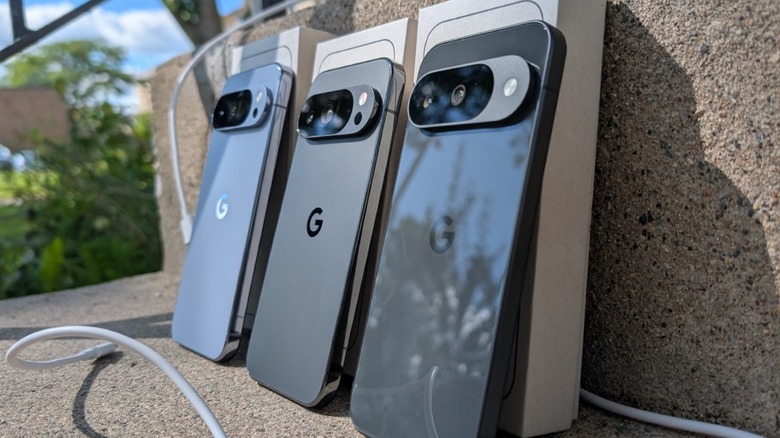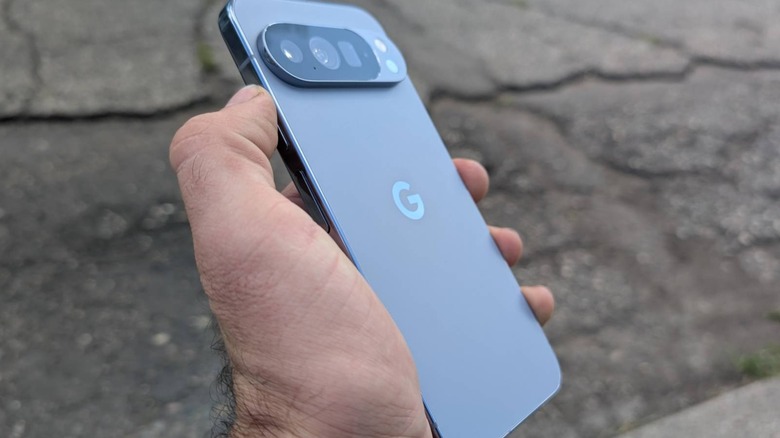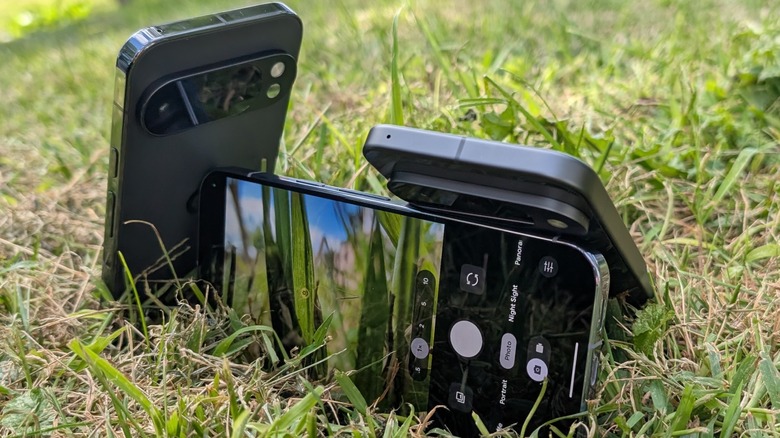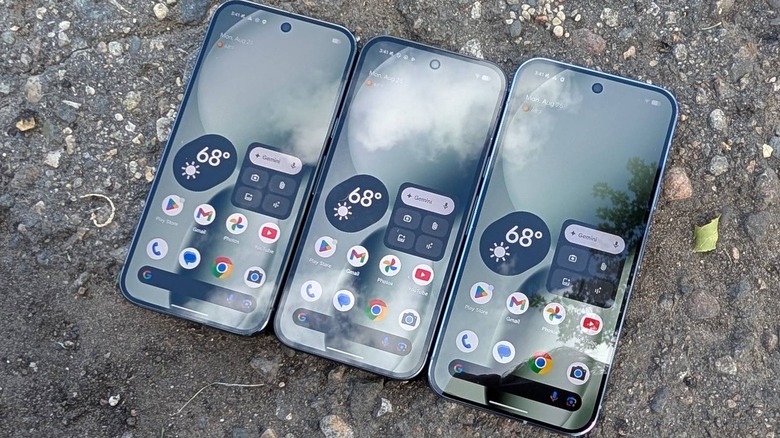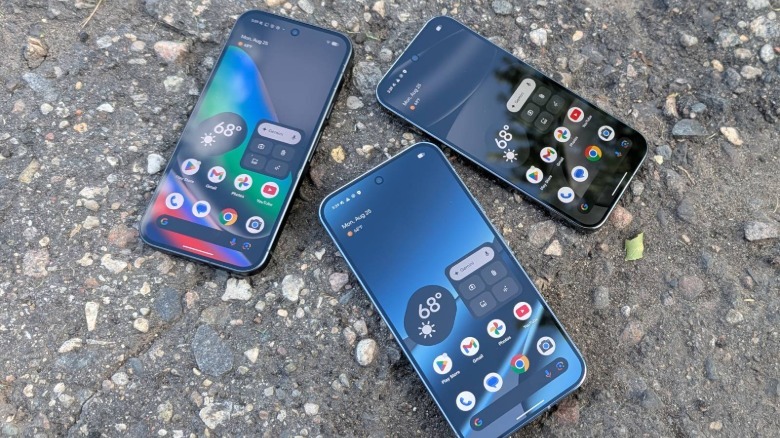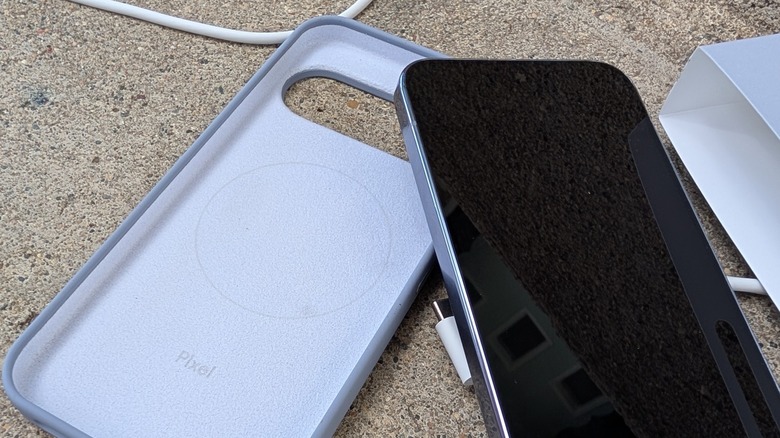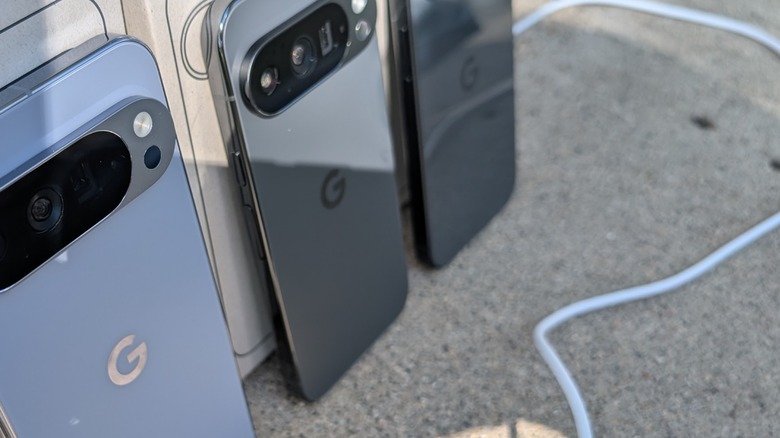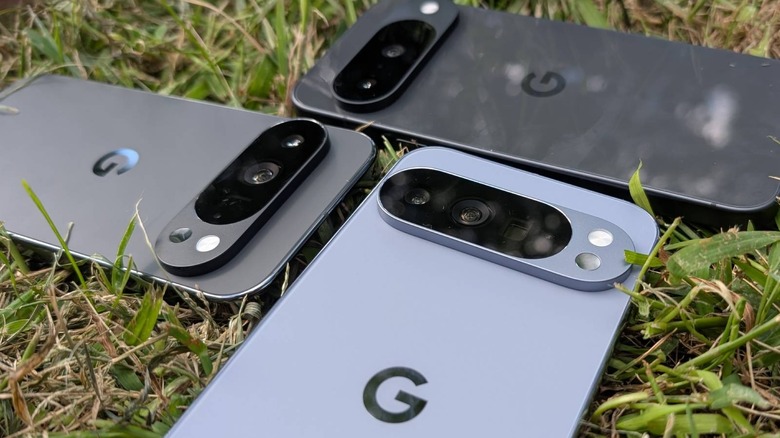The Pixel 10 Pro XL Doesn't Need AI To Feel Special (And Someone Should Tell Google That)
The Google Pixel 10 Pro XL (and the rest of the Pixel 10 series) represents the company's most intense focus on artificial intelligence features in any device yet. But if you're not excited about AI, don't worry, Google Pixel 10 (and the Pro models) are worth a look even if you deactivate and disable every bit of AI, top to bottom. While Google's promotion of these devices will inevitably focus on AI — that's hype, at the moment — really, the whole Pixel 10 series has excellent-enough hardware and software to match the devices' prices.
In the photos in this review, you'll see that the Google Pixel 10 Pro XL and its two smaller relatives look a lot like one another. Set in a row, you'll see a difference in luster between the Pro and non-Pro, and you'll see a significant difference in the size of the display in the XL device. But they're all Google Pixel 10 devices — and they all offer the same sort of guarantee when it comes to longevity in both software* and hardware.
*"Pixel updates for 7 years from when the device first became available on the Google Store in the US." That's according to Google as of the publication date of this review.
Google's provided a Google Pixel 10, a Google Pixel 10 Pro, and a Google Pixel 10 Pro XL for the following review. In our primary testing here we've focused on differences between these devices and their predecessors — as well as how well they seem set to stand up over the next several years. With or without the AI, these devices are just the latest in a line of phones from Google that've delivered both delight and reliability — this latest set has a lot to live up to.
Pixel 9 Pro vs 10 Pro (Even Without AI)
The Google Pixel 10 Pro XL is shockingly similar to its predecessor in size, shape, and quality. If you have a Pixel 9 Pro XL right now and it's serving you perfectly well, by all means, keep using it. But not because the 10 Pro XL is bad, or unworthy of an upgrade. Do it because Google did too good of a job in keeping the previous generation up and running, and updated, and perfectly find for continued operation into the future.
The same goes for the Pixel 9 Pro vs Pixel 10 Pro, and 9 vs 10, and so on. It's only when you start looking for specific special features in these devices that you see the difference in value. But if you switch to a new device, you'll also be surprised and delighted by what the Pixel 10 Pro device brings to the table — if you're onboard with all the AI features it offers.
On the other hand — if you're planning on buying a Google Pixel smartphone and saying "no" to every available AI feature, the smartphone (any one of the three Pixel 10 devices released so far) is still a good value for the features it delivers. That's good news, regardless of your views on data permissions and on/off-device processing.
If you're moving from an older Pixel device to a Pixel 10, the changes are all good. The Pixel 10 Pro XL is the same but more, building on all the best bits and improving on what came before.
Camera Power Expansion
If you look at the specs in the cameras in the Pixel 10 Pro XL vs the 9 Pro XL, you might be surprised to find very little has changed. Has anything changed? The differences seem to be in the image processing (since we have new processors, as is generally the case with any new version of a phone), and in the potential for the user to work with what Google describes as "Pro Res Zoom up to 100x."
Pro Res Zoom up to 100x isn't optical zoom — it's using software to get that image, and AI to make it look nice. But even without that special AI feature, the Google Pixel 10 Pro XL delivers extraordinary photos.
While we're using what would appear to be effectively identical hardware in the back-facing camera array of the Pixel 10 Pro XL vs the Pixel 9 Pro XL, it feels to me like what I'm getting is more fully-processed photos. Perhaps what I'm seeing is the latest mix of Google's Computational Photography in action.
And maybe that's just another branding of what we now lump in with "AI" powers in play. And before I get too deep in the realm of "if the computer is processing the photo, is it still real" thinking, here's the verdict: Google Pixel 10, 10 Pro, and 10 Pro XL still deliver "they just look good" photos I've snapped with a smartphone — better each year with every main-series Pixel, and this one's no exception.
Displays And Sizes
The Google Pixel 10 and 10 Pro are effectively the same size — not exactly the same size, but so extremely similar in size and shape that it'd be shocking if you were able to tell the difference at a distance. The big difference in-hand between the 10 and 10 Pro is in the display.
The Pixel 10 has a 1080 x 2424 pixel OLED display, while the Pixel 10 Pro has a 1280 x 2856 pixel LTPO OLED display. The potential pixel density could make a difference for you if you've previously used a similar-sized but sharper display.
If you have a Google Pixel 9 Pro in your hand right now, for example, you'll probably want to buy another Pro, or the 10 (non-pro)'s display will feel like an annoying downgrade. Each of the three Pixels we're talking about here — 10, 10 Pro, 10 Pro XL, has a set of features that's made to feel like just-enough of an upgrade over its direct predecessor to feel new.
The Pixel 10 Pro XL's display is significantly larger than the 10 and 10 Pro, and almost identical to that of the Pixel 9 Pro XL. While there is a weight difference in the Pixel 10 Pro XL, you'll need a digital scale to actually notice — just a few grams more account for a bigger battery (5200 mAh vs the 5060 mAh of the Pixel 9 Pro) and maybe a bit for the hardware required to make Pixelsnap work.
Pixelsnap Begins Now
Right now Pixelsnap is a system that will absolutely inevitably draw comparisons to Apple's iPhone MagSafe system — which is also a magnetic ring system that works with certain iPhone models. The Pixel 10, Pixel 10 Pro, and Pixel 10 Pro XL all have "Pixelsnap wireless charging (Qi2-certified)" in the mix.
The difference between models here is in the potential power transfer. All three models have wireless charging like you'd been able to take advantage of with previous Pixel devices. All three Pixel 10 devices now also have Pixelsnap wireless charging, but the 10 and the 10 Pro have "up to 15W" while the 10 Pro XL has "up to 25W."
So the Pixel 10 Pro XL charges faster than the other two, and it has a significantly larger battery (but it's working with a significantly larger display, as well, so it needs a larger battery as such. If you pay for the official Pixelsnap wireless charging accessory, you can charge faster with the 10 Pro XL than the other two.
I look forward to seeing where Pixelsnap goes — and I assume it'll be a truly entertaining journey from here on out, given what accessory-makers have made with Apple's iPhone series so far. For now, we've just got Google's own set of chargers available from Google Store.
Battery Life and Cords
You can also charge faster with Google's 45W USB-C PPS charger with the 10 Pro XL than you can with the other two — they can only use up to a 30W USB-C PPS charger. BUT they're all exceptionally fast — so long as you pay for the extra charger that does not come in the box. All Pixel 10 devices released thus far have a standard USB-C in the box, but no charging brick.
Pixel 10 series battery life is very similar to what it was last year (with the Pixel 9 series). There does not appear (in our tests thus far) to be any significant extra drain on any of the three devices' batteries due to any features introduced with the latest generation.
Given the extreme similarities between the Pixel 9 and Pixel 10 series devices, it is absolutely no shock to see that the differences in battery life is negligible in each device compared to its predecessor.
I have had no issue getting a full day out of any of the three devices with my standard level of use — that's several hours of constant screen use per day along with notification checks and checking of apps and so forth — not to mention the abnormal amount of checking on Pokémon GO whenever I take a break from normal life.
Price and Release Info
The Google Pixel 10, Pixel 10 Pro, and Pixel 10 Pro XL can be purchased from the Google Store online. The Google Pixel 10 Pro pricing starts at $999, while the Pixel 10 Pro XL starts at $1,199. Both Pixel 10 Pro devices come in four color options, including Moonstone (gray), Jade (green), Porcelain (white), and Obsidian (black).
The base price for the Pixel 10 at launch is $799. Pixel 10 comes in Indigo (blue), Frost (light blue/white), Lemongrass (shockingly electric green/yellow, and Obsidian (black) (all of them as reflective as what you see in the photos in this article.) When this review is being written, these devices are on pre-order — by the time you read this article, they'll likely be available for standard order.
You'll also find the Google Pixel 9 family still available, more than likely — and they'll still be as high-quality and worthy of their purchase price as they were when we published Google Pixel 9 Review (compared the 9 Pro and 9 Pro XL) back in 2024. The same goes for the Pixel 9 Pro Fold, as seen in our Pixel 9 Pro Fold Review – all the way up through the point at which the Pixel 10 Pro Fold is released — unless they deliver some spectacular magic that blows this fold's predecessor out of the water — we shall see!
